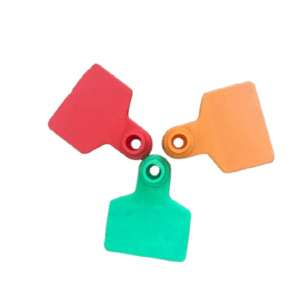🐄 Purpose of Ear Tags
-
Animal Identification
-
Assigns a unique number or code to each animal for easy tracking.
-
Helps identify ownership, lineage, or vaccination history.
-
-
Record Keeping
-
Simplifies tracking of breeding, medical history, weight gain, and production records.
-
Essential for compliance with national livestock databases or export requirements.
-
-
Disease Control
-
In case of a disease outbreak, ear tags help trace the source and contain the spread.
-
-
Farm Management
-
Eases grouping and sorting of animals based on age, weight, productivity, or health status.
-
✍️ Information on Ear Tags May Include
-
Animal ID number
-
Farm or herd number
-
QR code or barcode (for scanning)
-
Breed, birth date, or sex (optional)
-
RFID chip (for electronic tags)
🔧 How to Apply Ear Tags
-
Use an ear tag applicator or plier.
-
Apply the tag midway between the two main cartilage ribs of the ear.
-
Clean the applicator and ear before tagging to prevent infection.
⚠️ Precautions
-
Ensure proper sterilization to avoid infections.
-
Use the correct type of tag for each species.
-
Monitor tagged animals for any irritation or tearing of the ear.












